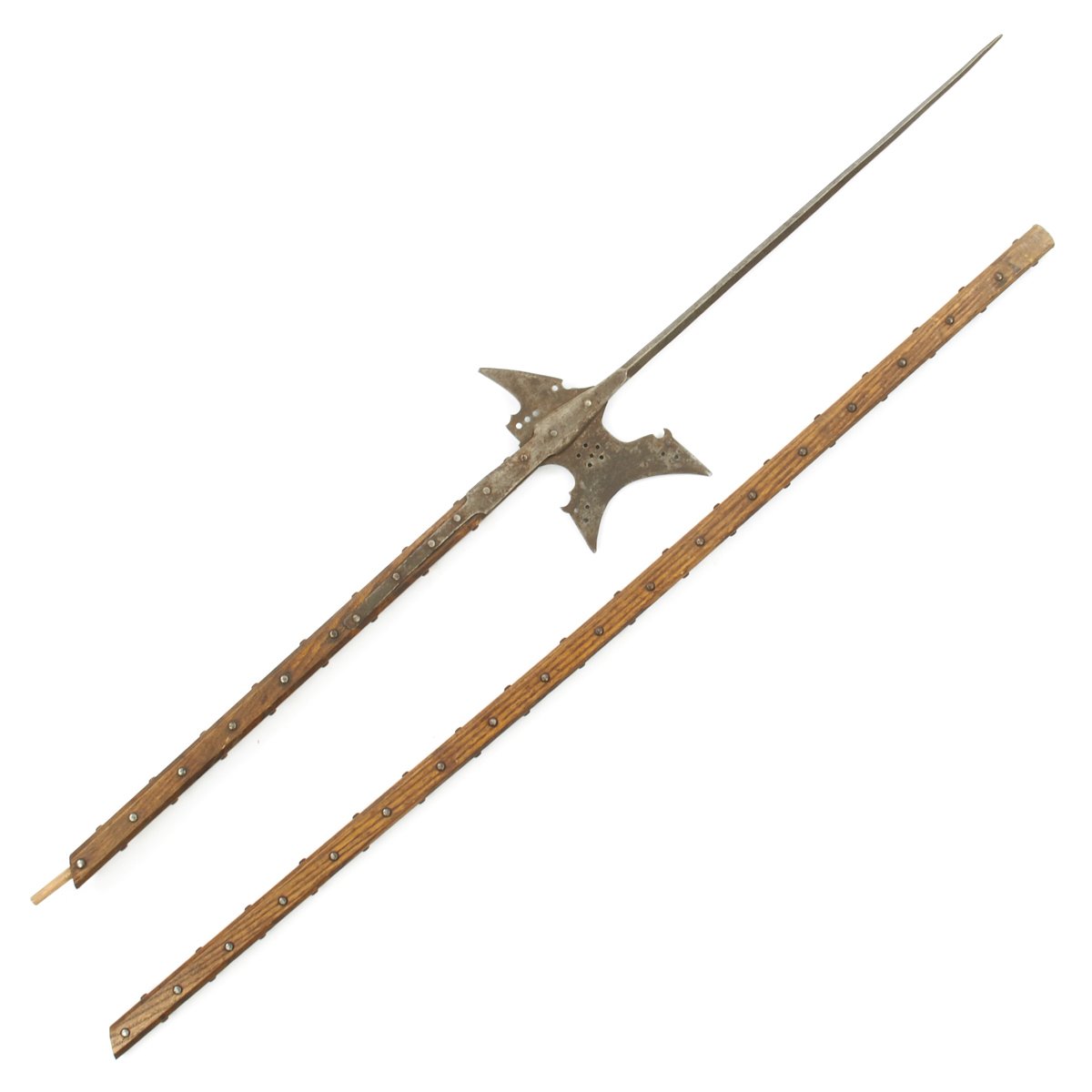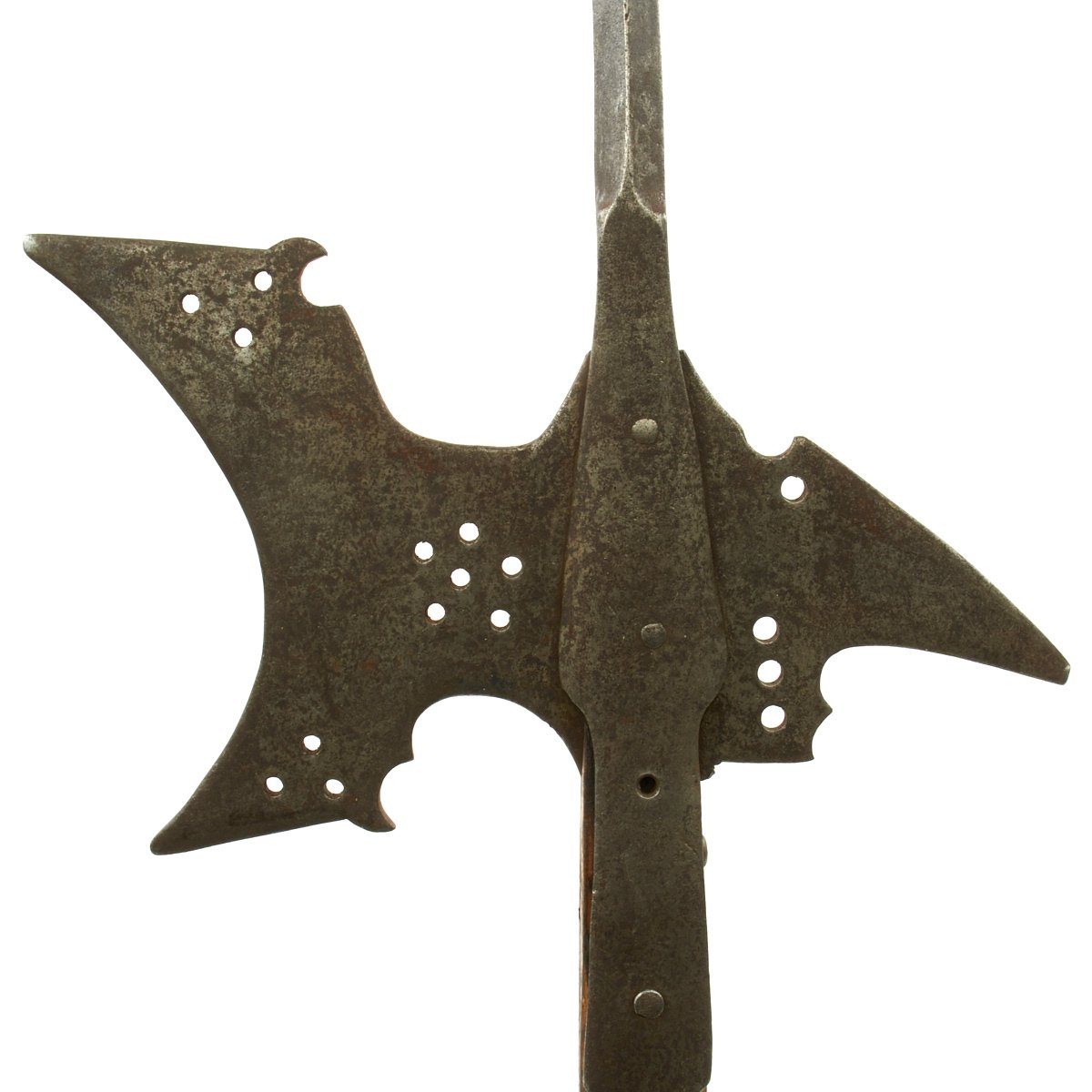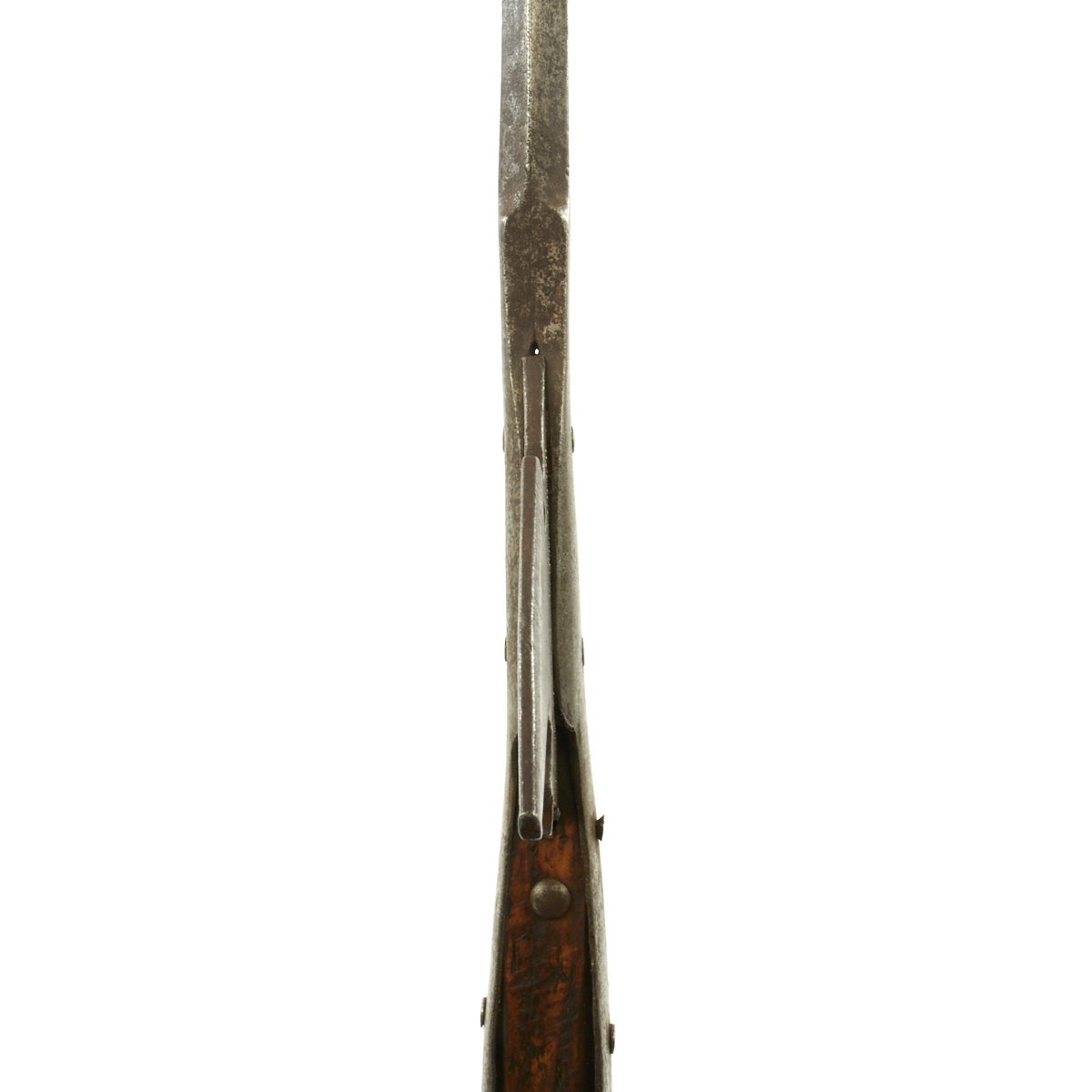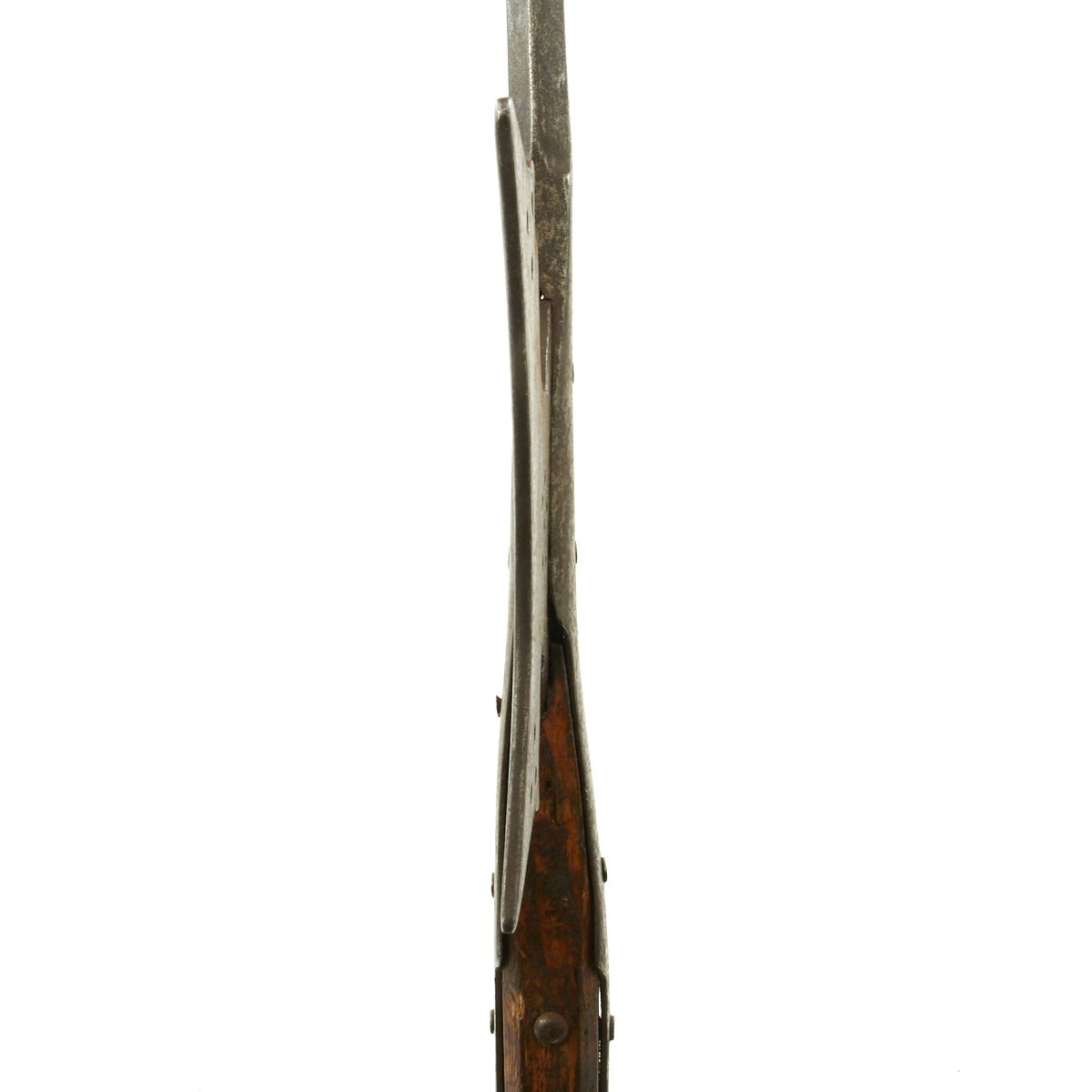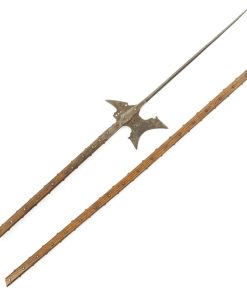Original English Elizabethan Era 9 ft. 5 in. Halberd Pole Arm – circa 1600 Original Items
$ 1.750,00 $ 437,50
Original Item: One of a Kind. This impressive example came out of a CASTLE DISPLAY, it is full length or almost full length, being 9′ 5″ (113″) in overall length. The spike alone is 24″ long, the head including the Axe and support straps are a further 17″ in length. The remainder is an eight sided wood haft with iron domed studs all the way from head to tail on the four main/wide sides.
For ease of transportation the haft has been sawn at an angle, with a fat wooden dowel inserted so it can be reassembled for display, each section measuring approximately 57″. The iron head displays an AXE on the one side and a spiked HOOK on the other, both decorated with holes in clusters. These 1500-1600 Halberd are known for the extra long spike to the tops which were largely obsoleted by the English Civil War of 1640.
This is one of five varying examples we purchased in England in 2014. The two halves of the haft come from the same Halberd which can be confirmed by the wood grain pattern. These came straight off the wall having been there for possibly 300 years. Ready to Display!
A halberd (also called halbard, halbert or Swiss voulge) is a two-handed pole weapon that came to prominent use during the 14th and 15th centuries. The word halberd is most likely equivalent to the German word Hellebarde, deriving from Middle High German halm (handle) and barte (battleaxe) joint to helmbarte. Troops that used the weapon are called halberdiers.
The halberd consists of an axe blade topped with a spike mounted on a long shaft. It always has a hook or thorn on the back side of the axe blade for grappling mounted combatants. It is very similar to certain forms of the voulge in design and usage. The halberd was usually 1.5 to 1.8 metres (5 to 6 feet) long
Fast Shipping with Professional Packaging
Thanks to our longstanding association with UPS FedEx DHL, and other major international carriers, we are able to provide a range of shipping options. Our warehouse staff is expertly trained and will wrap your products according to our exact and precise specifications. Prior to shipping, your goods will be thoroughly examined and securely secured. We ship to thousands clients each day across multiple countries. This shows how we're dedicated to be the largest retailer on the internet. Warehouses and distribution centres can be located throughout Europe as well as the USA.
Note: Orders with more than one item will be assigned a processing date depending on the item.
Before shipping before shipping, we'll conduct a thorough inspection of the items you have ordered. Today, the majority of orders will be delivered within 48 hours. The delivery time will be between 3-7 days.
Returns
The stock is dynamic and we cannot completely manage it because multiple stakeholders are involved, including our factory and warehouse. So the actual stock may alter at any time. It's possible that you may not receive your order once the order has been made.
Our policy is valid for a period of 30 days. If you don't receive the product within 30 days, we are not able to issue a refund or an exchange.
You can only return an item if it is unused and in the same state as the day you received it. You must have the item in its original packaging.
Related products
Uncategorized
Uncategorized
Uncategorized
Angolan Rebel 1970s era 60mm Inert Display Mortar from Angolan Civil War Original Items
Uncategorized
Uncategorized
Uncategorized
Uncategorized
Uncategorized
Uncategorized
Uncategorized
Uncategorized
Uncategorized
Armored Burgonet Helmet & Polearm from Scottish Castle Leith Hall Circa 1700 Original Items
Uncategorized
Uncategorized
Uncategorized
Uncategorized
Uncategorized
